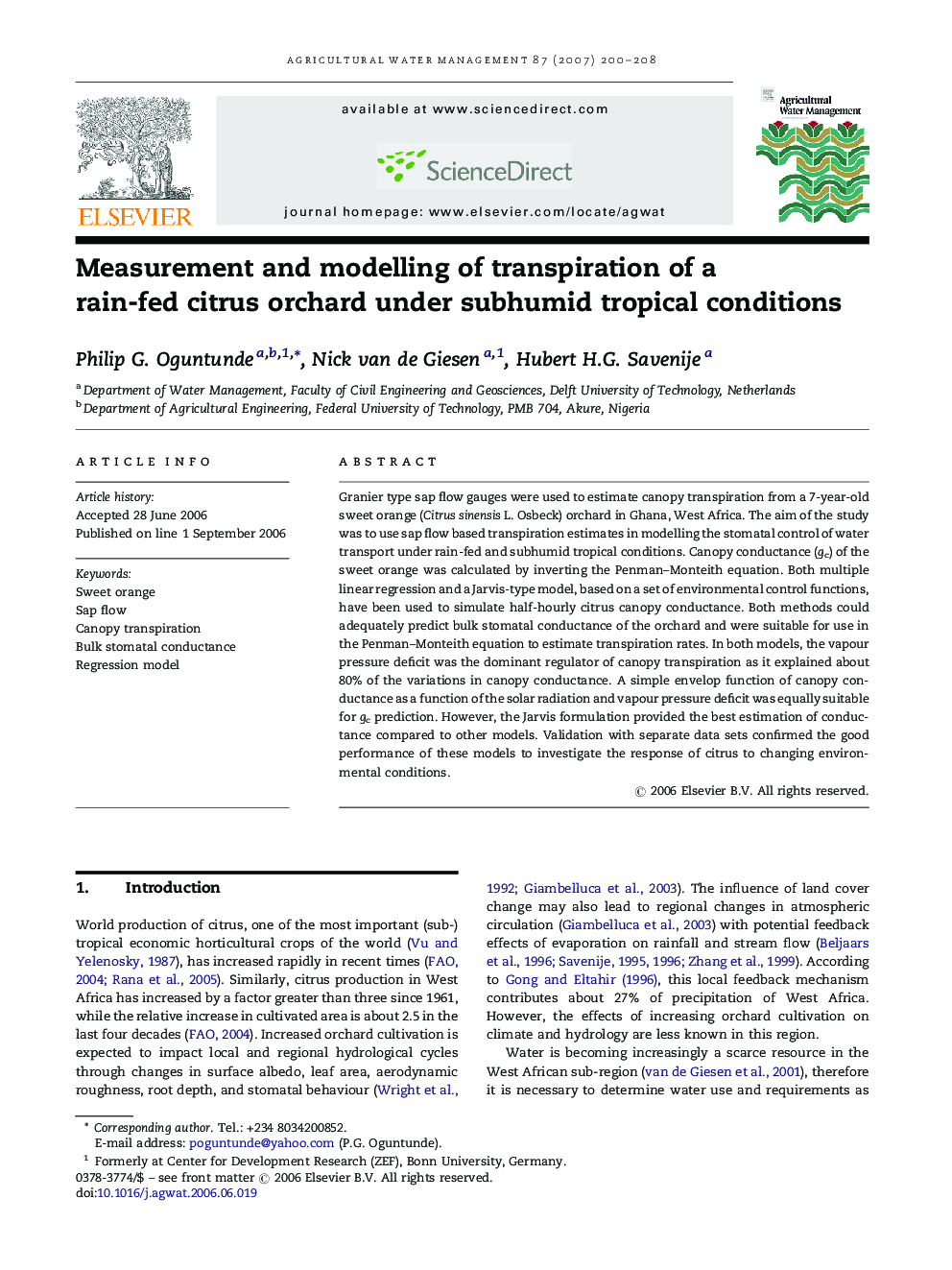| Article ID | Journal | Published Year | Pages | File Type |
|---|---|---|---|---|
| 4480411 | Agricultural Water Management | 2007 | 9 Pages |
Granier type sap flow gauges were used to estimate canopy transpiration from a 7-year-old sweet orange (Citrus sinensis L. Osbeck) orchard in Ghana, West Africa. The aim of the study was to use sap flow based transpiration estimates in modelling the stomatal control of water transport under rain-fed and subhumid tropical conditions. Canopy conductance (gc) of the sweet orange was calculated by inverting the Penman–Monteith equation. Both multiple linear regression and a Jarvis-type model, based on a set of environmental control functions, have been used to simulate half-hourly citrus canopy conductance. Both methods could adequately predict bulk stomatal conductance of the orchard and were suitable for use in the Penman–Monteith equation to estimate transpiration rates. In both models, the vapour pressure deficit was the dominant regulator of canopy transpiration as it explained about 80% of the variations in canopy conductance. A simple envelop function of canopy conductance as a function of the solar radiation and vapour pressure deficit was equally suitable for gc prediction. However, the Jarvis formulation provided the best estimation of conductance compared to other models. Validation with separate data sets confirmed the good performance of these models to investigate the response of citrus to changing environmental conditions.
